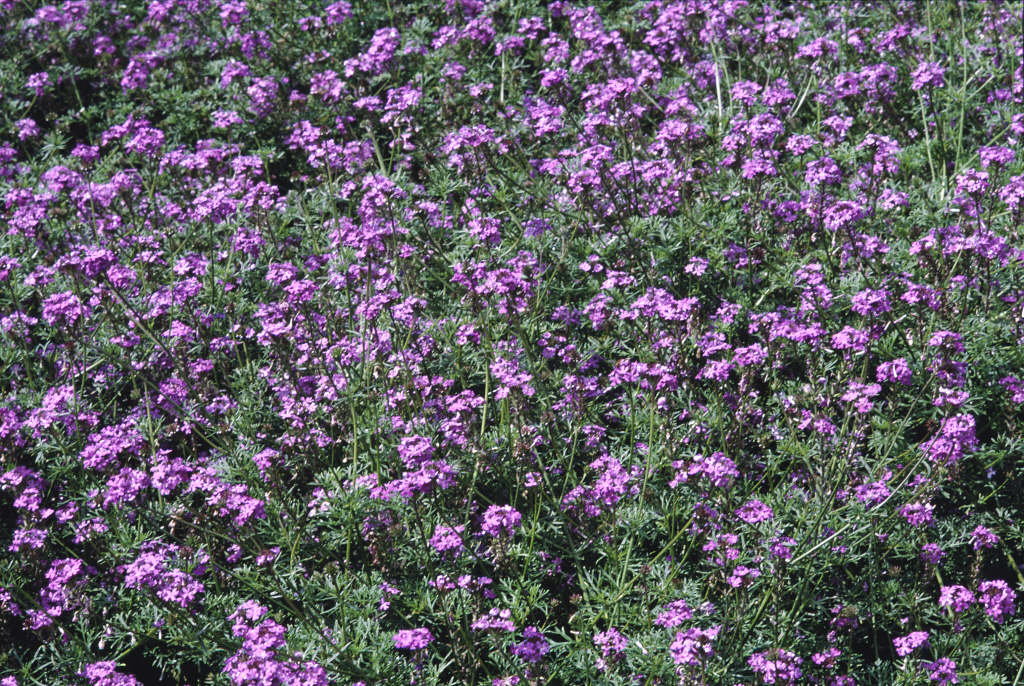Not the plant you're looking for? Search over 300,000 plants
Annual BiennialBedding
Size
Ultimate height
0.1–0.5 metresTime to ultimate height
1–2 yearsUltimate spread
0.5–1 metresGrowing conditions
Clay
Loam
Sand
Moisture
Moist but well–drainedpH
Acid, Alkaline, NeutralColour & scent
| Stem | Flower | Foliage | Fruit | |
| Spring | Green | |||
|---|---|---|---|---|
| Summer | Purple | Green | ||
| Autumn | Purple | Green | ||
| Winter |
Position
- Full sun
Aspect
East–facing or West–facing
Exposure
Exposed or Sheltered Hardiness
H3Botanical details
- Family
- Verbenaceae
- Native to GB / Ireland
- No
- Foliage
- Deciduous
- Habit
- Bushy
- Genus
Glandularia are annuals or herbaceous perennials, native to The Americas and closely-related to Verbena (and included within Verbena until recently). Showy flowers typically have 5 petals and are held in rounded clusters in summer and autumn
- Name status
Accepted
How to grow
Cultivation
Grow in moderately fertile, moist but well-drained soil in full sun
Propagation
Propagate by seed sown in early spring at 18-21°C
Suggested planting locations and garden types
- City and courtyard gardens
- Coastal
- Cottage and informal garden
- Patio and container plants
- Flower borders and beds
- Banks and slopes
- Garden edging
Pruning
Cut back after flowering
Pests
Damage by slugs may be a problem
Diseases
Susceptible to powdery mildews
Love gardening
Sign up to receive regular gardening tips, inspiration, offers and more
View our Privacy Policy
Get involved
The Royal Horticultural Society is the UK’s leading gardening charity. We aim to enrich everyone’s life through plants, and make the UK a greener and more beautiful place.
